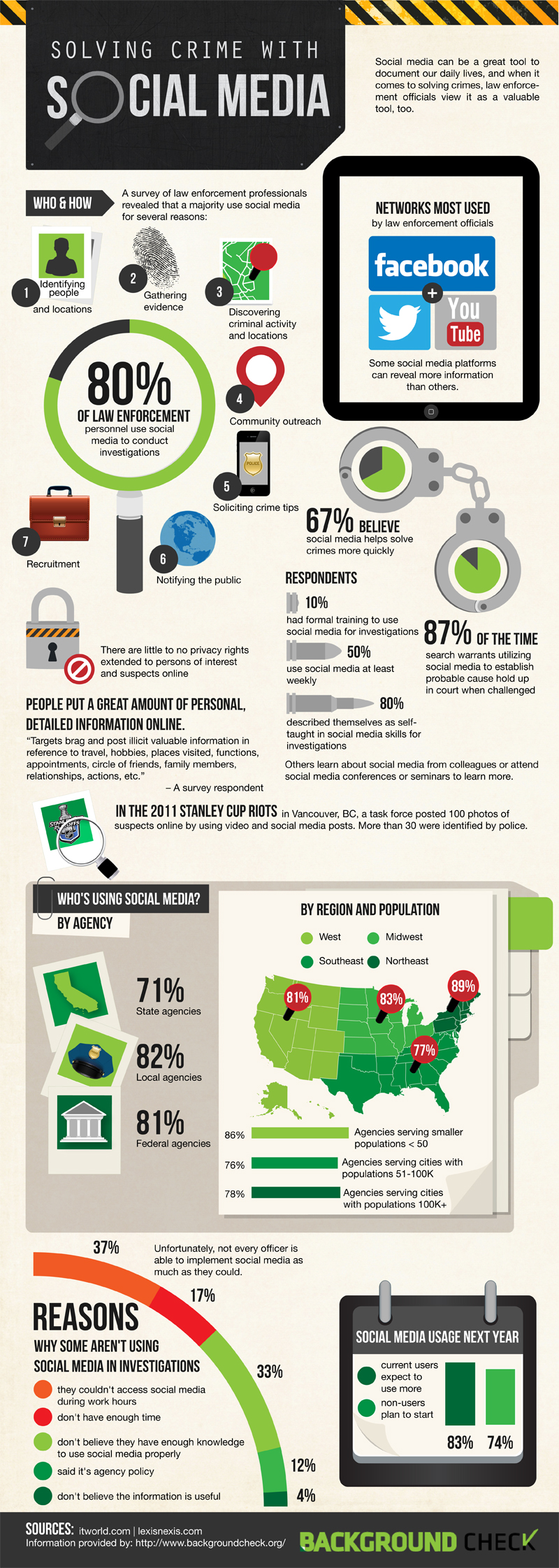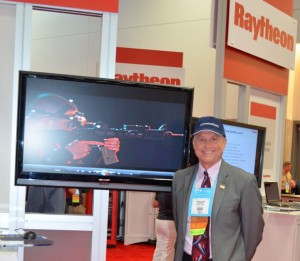
Image: http://latesttechworld.com
You can view the use of social media without application of proper analytics tools through the axiom of the old story: A wife and husband were driving on the interstate. The wife asks, “Where are we going?” The husband replies, “I don’t know but we are making great time.” Using social media to get your message out is only a small part of the process. In order to make social media work, you not only have to be able to decide the correct platform for sending messages, but also, how to select and use the correct analytics to determine if you are hitting the right targets. You must know how to gauge if your social media efforts are being successful in order to determine the return on your social media investment,
At Police Department A, the Major in charge of the media relations department is incredibly pleased with the results from the latest surveys showing the impact of department’s social media campaign. Crime may have spiked in one area, due to a string of robberies, but with the use of social media to get the message out, the citizens responded and their help led to the capture of the criminal. In this department, they use analytics to gauge impacts of their social media messaging in order to help tailor the message platforms for different neighborhoods.
Now, consider the situation at Police Department B. The Chief comes into the media relations department and simply states crime is down, but social media has been a failure. The county manager is going to pull the funding for the initiative if it can’t be shown to be effective. Confused by the statement, the director of social media replies, “For the report, do you want us to combine numbers for all projects, targeted neighborhoods, heat graphs showing area coverage, individually map points or all combined?” The chief simply says, “Yes” and walks out the door.
A single law enforcement organization may well need to use several different social media platforms to get its message out to their communities. The proper platform is dependent on the base makeup of the communities who use various social media is different ways. For example, to serve and connect to the community, an organization has a number of platforms to choose from: direct emails, electronic fliers, blog posts, websites, Facebook, Twitter, or even stay with simple face to face officer to individual to get its message out. But once you find the right social media platform to get your message out, you best not think your work is done. This is the point at which many social media programs derail. You have to determine if your efforts are being successful. You must gauge how much of your target audience received the messages, and then if they acted on the message. Use targeted site analytics to determine your coverage and then the impact of your message on the individuals who make up your communities. You will see if you are making connections, and building the desired relationships, between law enforcement and the community through cyber space. Then, as necessary, you make adjustments to better use the platforms to get your message out. Without using the correct analytic tools, you are truly operating blind.
Excellent analytical platforms exist that can help you gauge your social media impact. They have varying costs, and can be simple or complex. Before deciding which you will use, first, ask what you wish to discover and monitor, and then how to make sense of the data you will get. How do you want to see your data presented? Do you want heat maps to graphically see your coverage area, straight data numbers, “pings,” two way blog communications or some other way? The choices can be daunting and require extensive homework to choose the right one for your situation. There are over 200 analytical tools on the marked today to include:
- Google Analytics: Shows how many people went to your website and where they stayed the longest. Are people reading what you want them to read? Did you hit or miss with your organizations website? Remember the website is your brochure to the world.
- TwitSprout: Ranks your top tweets and number of times retweeted.
- TweetyFeet: Basic dashboard for multiple sites and lets you know immediately when someone is using one of your tools.
- HootSuite: Manage your activity from several social media platforms in one place.
- Reinvigorate: Heat maps graphically show the segment you are hitting.
Even the best analytics provides only so much data; it is the human intelligence from your officers who give greatest insights and confirmations as to your level of social media success. For instance, when you are using social media to alert the community of specific crimes in an area, the commanders see will see any changes in real numbers. Then the question is, did the message make the community aware of the problem, and did they help to resolve the issue? Commanders and officers can talk to the citizens and learn if social media did influence the community in resolving the crime issue. During community meetings, commanders can discuss the social media platforms and see if the community has the ability, interest, or understanding to use them. The feedback may show social media messages being missed by a particular segment of the community, highlighting need for the police to teach the citizens how to use social media. Working with the community in this manner fosters trust in the community for law enforcement.
A street level officers can hand out flyers to citizens on where to find crime tips through the organization’s social media sites. More than anyone else in the organization, they have the ability gain feedback from individuals in the communities and bring back ideas on how platforms are working in area. They can help in the targeting of specific neighborhoods for social media training. But more importantly, they will be asking citizens if they have used the social media sites to learn information from the department to better protect themselves. The one-on-one conversations provide the meat on the bones of the analytical tool framework. The conversations help open the communication pipeline, while the analytics help gauge if the citizens are receiving the social media message.
Simply implementing a social media strategy to get your organization’s message out is only half the battle in an effective social media campaign. You must be able to see if you have been successful. From the outset, your organization must determine what it wants to measure and then choose the appropriate analytical tools. You cannot simply pick one over another without understanding the reach of each one. You might be able to get by with a simple analytic or find you require one that measures many platforms at once. The goal is not to simply go on a social media journey, but to also know when you have arrived at your destination.









